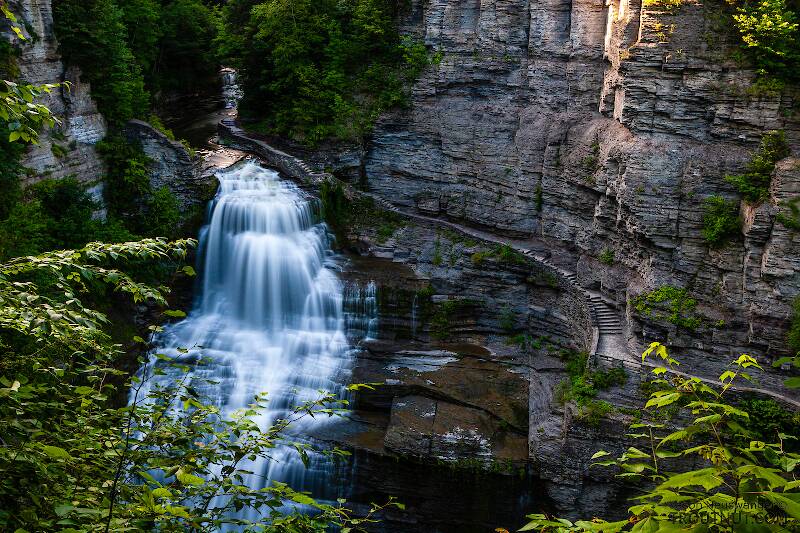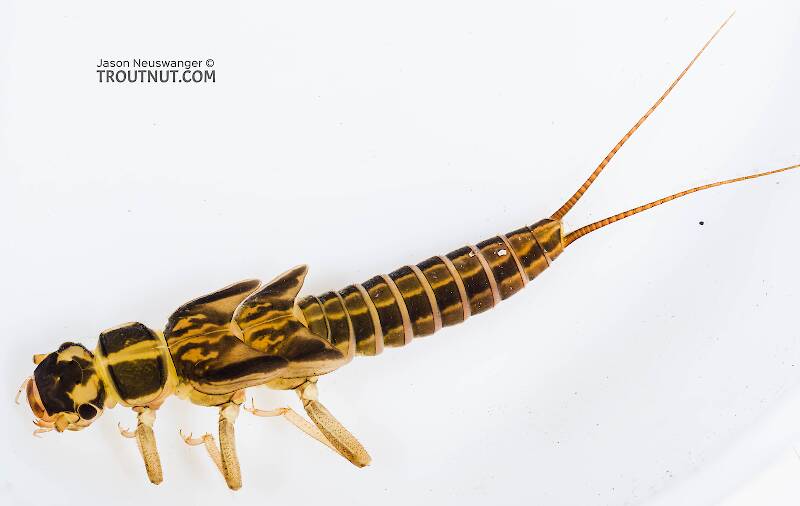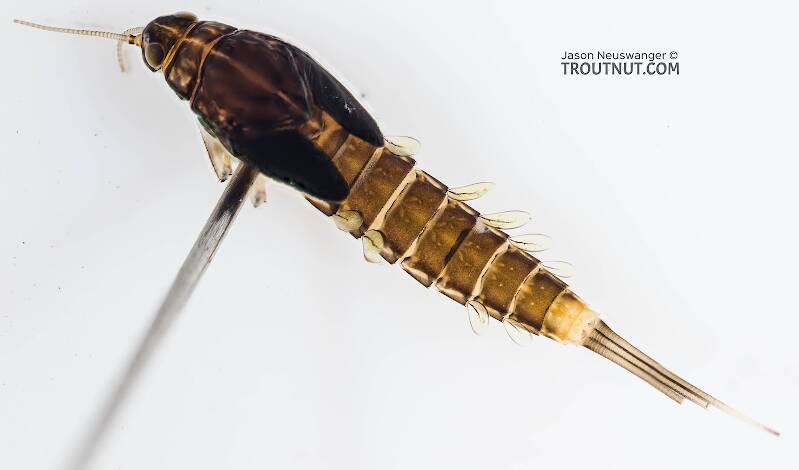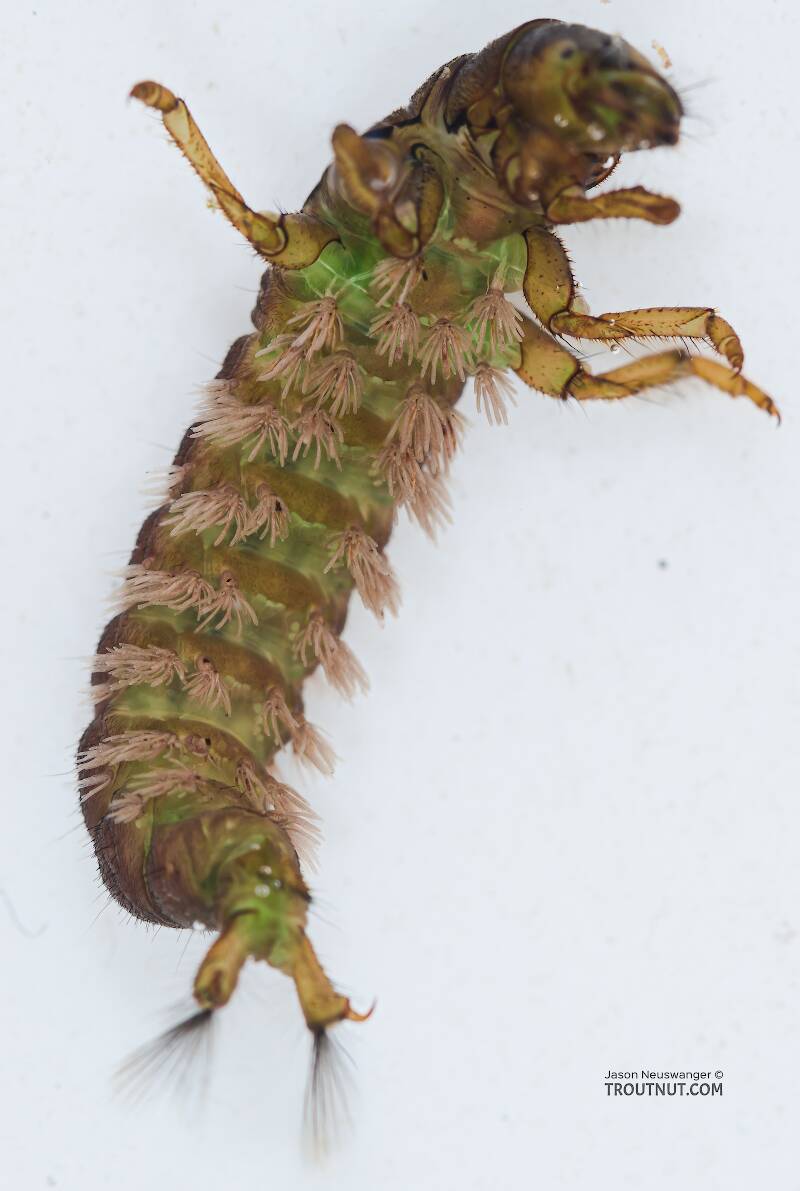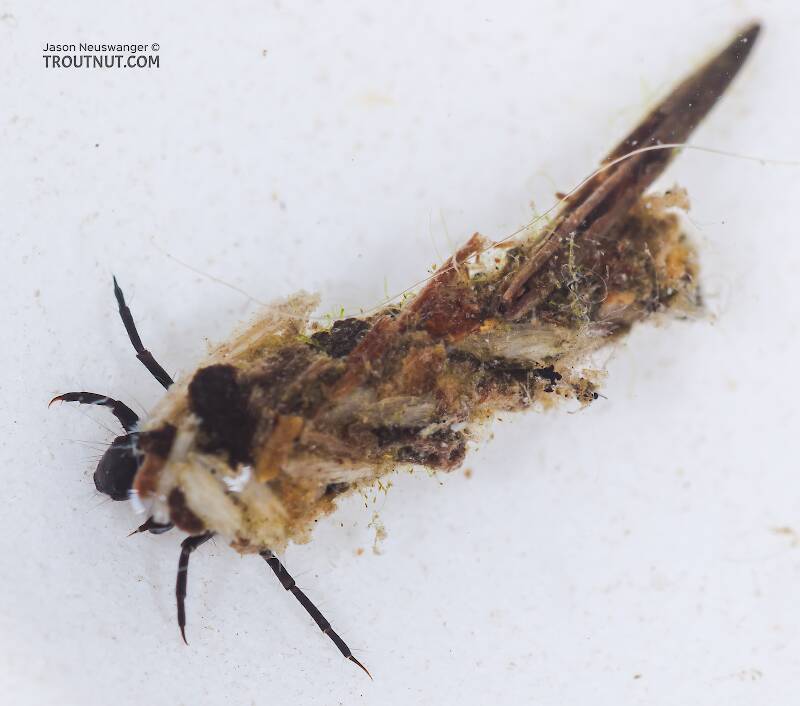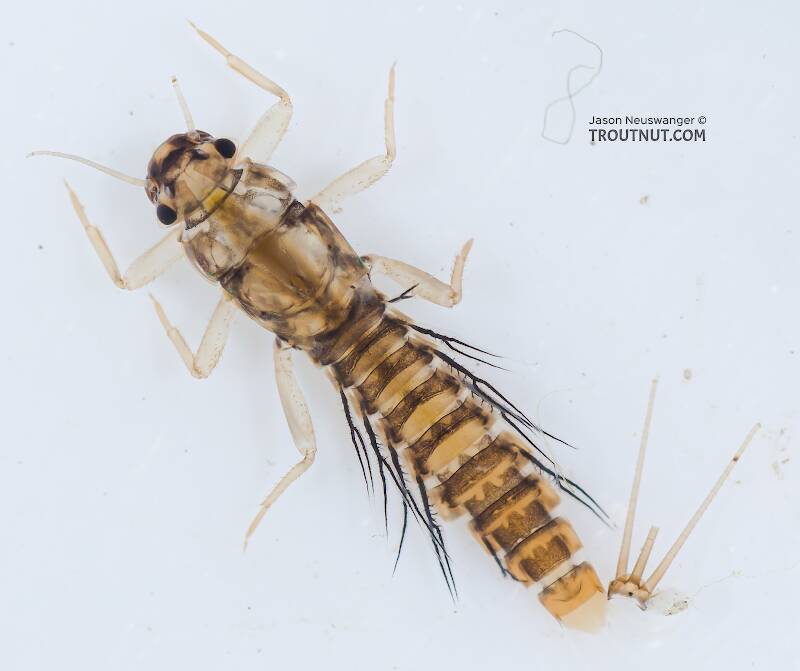
Blue-winged Olives
Baetis
Tiny Baetis mayflies are perhaps the most commonly encountered and imitated by anglers on all American trout streams due to their great abundance, widespread distribution, and trout-friendly emergence habits.
Featured on the forum

This one seems to lead to Couplet 35 of the Key to Genera of Perlodidae Nymphs and the genus Isoperla, but I'm skeptical that's correct based on the general look. I need to get it under the microscope to review several choices in the key, and it'll probably end up a different Perlodidae.

Troutnut is a project started in 2003 by salmonid ecologist Jason "Troutnut" Neuswanger to help anglers and
fly tyers unabashedly embrace the entomological side of the sport. Learn more about Troutnut or
support the project for an enhanced experience here.
Updates from May 4, 2023
Just a big old caddis larva
By Troutnut on April 13th, 2023
I revisited the Yakima to see if I could find any more nymphs of the species I suspect to be Ephemerella mucronata, which is new to these parts, so I can try to raise the nymphs into adults and confirm. I did catch a couple. I also found this big caddis larva and tested out some new techniques with my camera gear, with mixed results.
Closeup insects by Troutnut from the Yakima River in Washington

This specimen appears to be of the same species as this one collected in the same spot two months earlier. The identification of both is tentative. This one suffered some physical damage before being photographed, too, so the colors aren't totally natural. I was mostly photographing it to test out some new camera setting idea, which worked really well for a couple of closeups.
Some winter nymph collecting on the Yakima
By Troutnut on February 17th, 2023
I was in the vicinity of the upper Yakima River this weekend, but not in a good spot to try any winter fishing. So I brought my bug collecting supplies and sampled a bunch of nymphs and larvae, aiming to get some more good images to illustrate the new taxonomic keys. I was hoping to find a nice intact Skwala stonefly nymph to add to the beat-up one on the site already, a Nemouridae stonefly nymph for some proper anatomical close-ups, ditto for Capniidae or Leuctridae, and a variety of cased caddis larvae because I just don't have very many recent pictures of those with my best equipment. I met all these goals with the exception of Capniidae and Leuctridae, which will have to wait for another trip. On the way home I also stuck the net in a creek slightly closer to home and turned up some Epeorus nymphs, mostly Epeorus grandis which I didn't bother to photograph, but one from the Epeorus albertae group.
The unexpected highlight of the trip did not become apparent until after some time at the microscope. It seems I collected a several nymphs of Ephemerella mucronata, an obscure relative of the Hendrickson and Sulphur hatches, which has a holarctic distribution but has not previously been documented any closer to Washington than Montana and Alberta. However, there is a chance they belong to some other species not well-described as nymphs yet. I hope to collect more mature specimens and rear a few into adults to get a more definitive species ID.
The unexpected highlight of the trip did not become apparent until after some time at the microscope. It seems I collected a several nymphs of Ephemerella mucronata, an obscure relative of the Hendrickson and Sulphur hatches, which has a holarctic distribution but has not previously been documented any closer to Washington than Montana and Alberta. However, there is a chance they belong to some other species not well-described as nymphs yet. I hope to collect more mature specimens and rear a few into adults to get a more definitive species ID.
Photos by Troutnut from the Yakima River in Washington
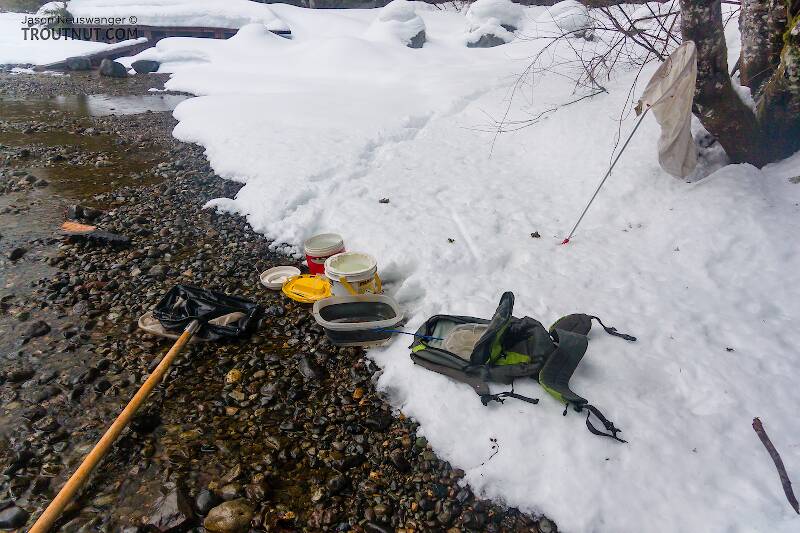
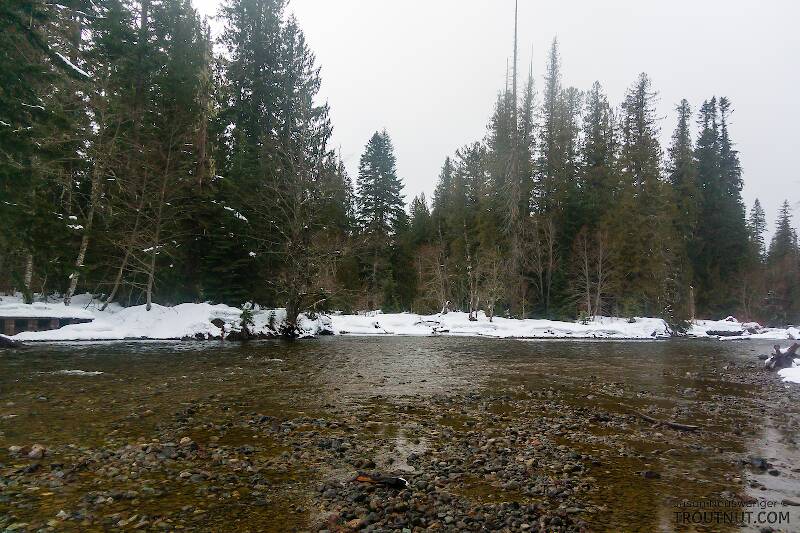
Closeup insects by Troutnut from the Yakima River and the East Fork Issaquah Creek in Washington
Exploring an eastern Washington desert spring creek
By Troutnut on September 30th, 2022
A work trip took me to eastern Washington this fall, and I took some time to drive far out into the desert and explore a thin blue line on the map, where groundwater flowed through a channel I thought might be trouty. In one spot I wanted to try, the channel was dry, but I hunted around and found water. After a long hike over ground that looked like it should be crawling with rattlesnakes (although I fortunately didn't see any), I stepped in and started looking for trout. There were some.
Fishing mid-afternoon on a sunny day, I was pleasantly surprised to find the first fishable October Caddis (Dicosmoecus) hatch I've encountered. There weren't thick clouds of bugs, just a noticeable number of adults flitting around, enough to make trout that seemed generally lethargic rocket to the surface for anything resembling a decent imitation. One long run lined with bank-side alders, a conspicuous feature on this grassy-banked stream, held an exceptional number of caddisflies perching in the leaves, enough that at least a few would fly away when I shook the trunk of any tree. There were trout below these trees in slow, shallow water that would not ordinarily have held them. It was interesting to to see such a convincing example of trout moving between different habitats to pursue a particular food source.
Fishing mid-afternoon on a sunny day, I was pleasantly surprised to find the first fishable October Caddis (Dicosmoecus) hatch I've encountered. There weren't thick clouds of bugs, just a noticeable number of adults flitting around, enough to make trout that seemed generally lethargic rocket to the surface for anything resembling a decent imitation. One long run lined with bank-side alders, a conspicuous feature on this grassy-banked stream, held an exceptional number of caddisflies perching in the leaves, enough that at least a few would fly away when I shook the trunk of any tree. There were trout below these trees in slow, shallow water that would not ordinarily have held them. It was interesting to to see such a convincing example of trout moving between different habitats to pursue a particular food source.
Photos by Troutnut from Mystery Creek #306 in Washington
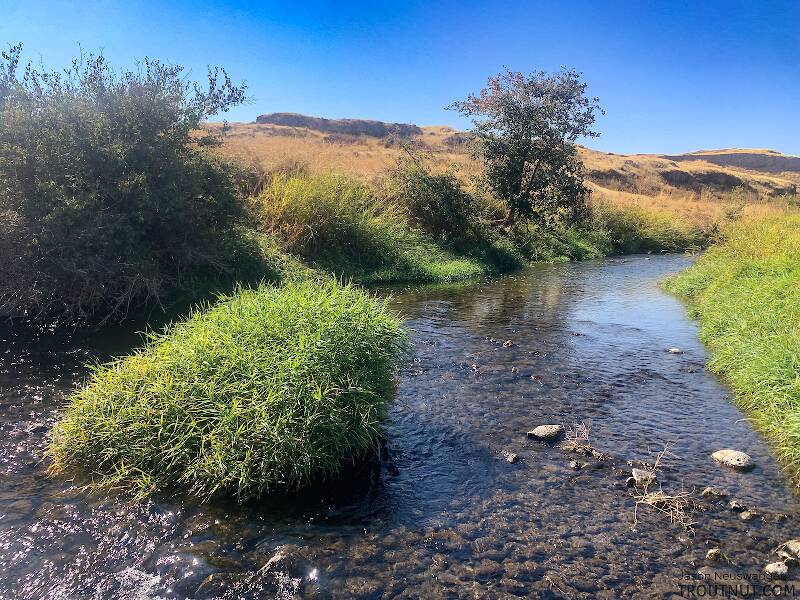
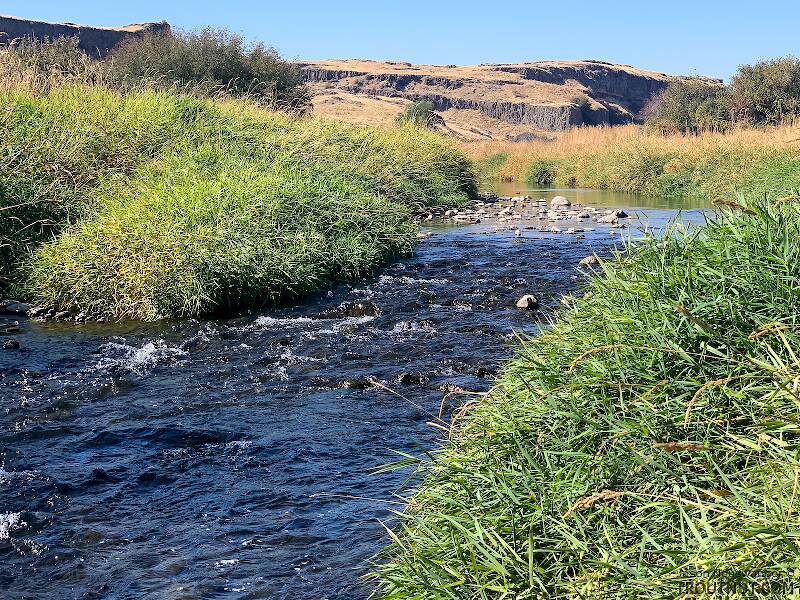
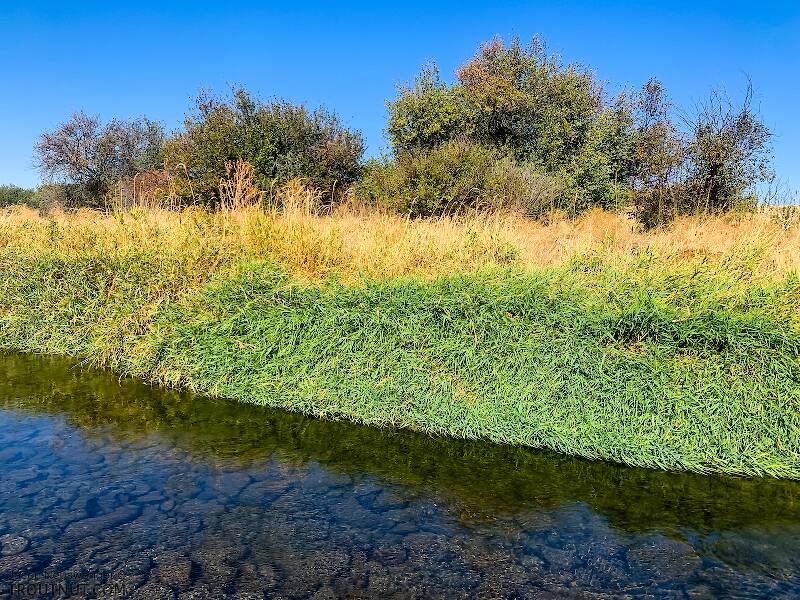
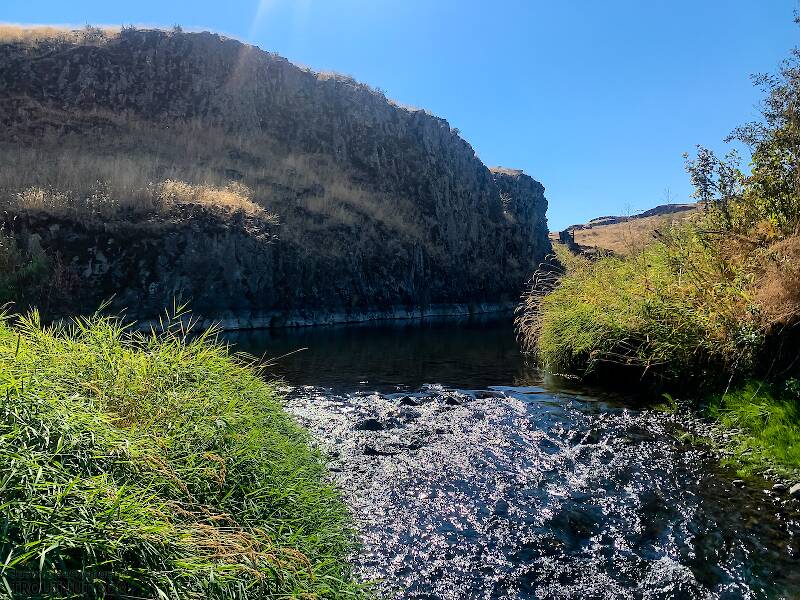
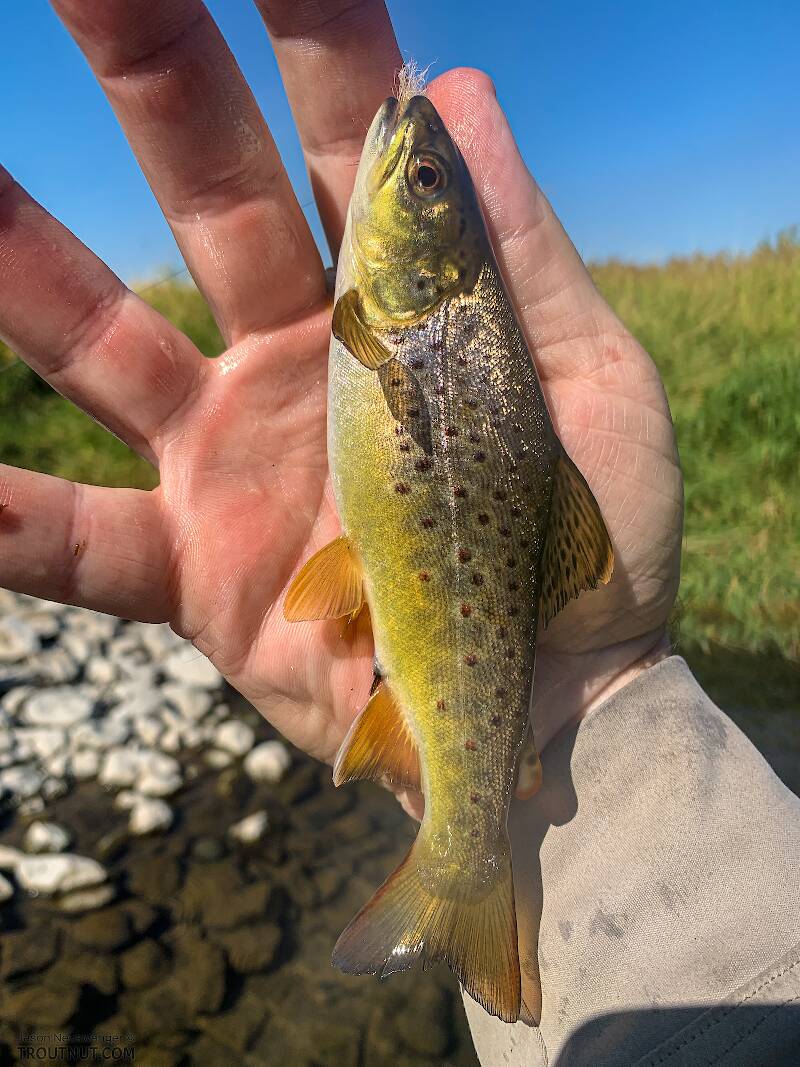
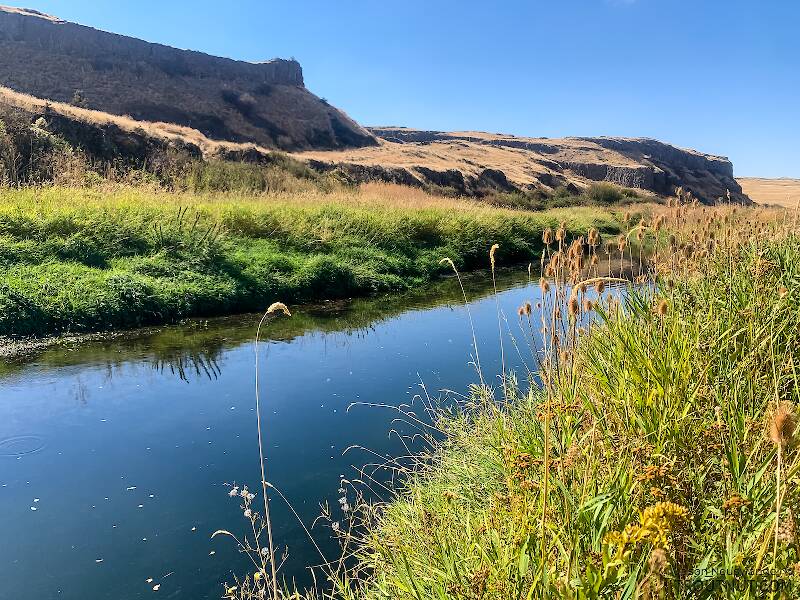
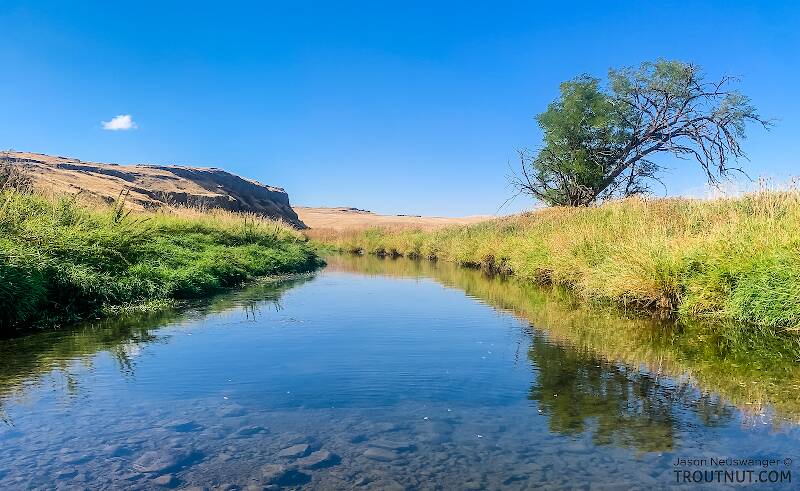
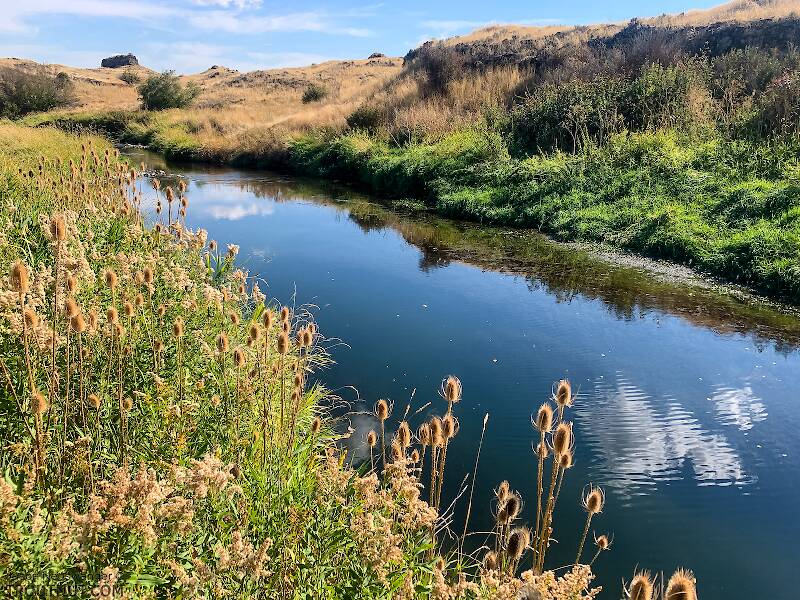
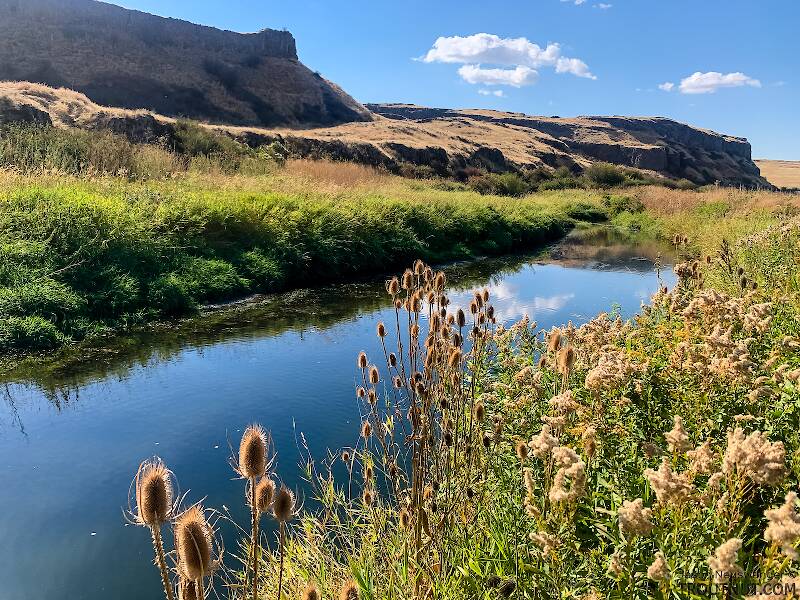
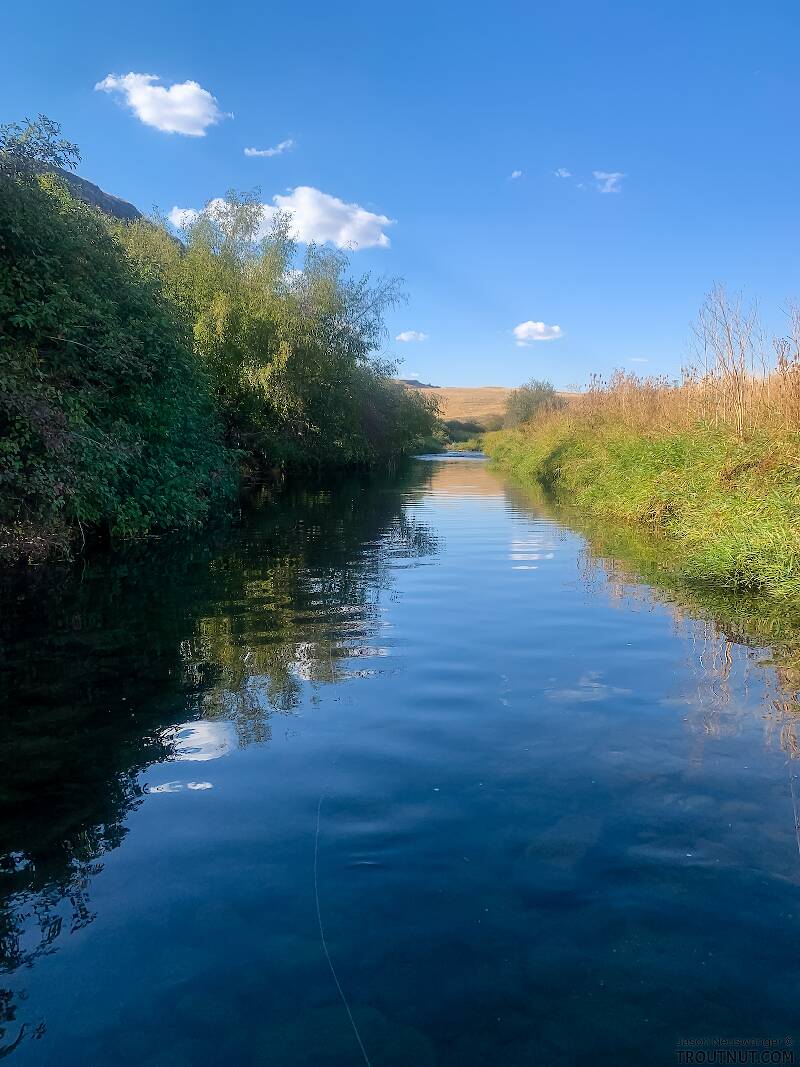
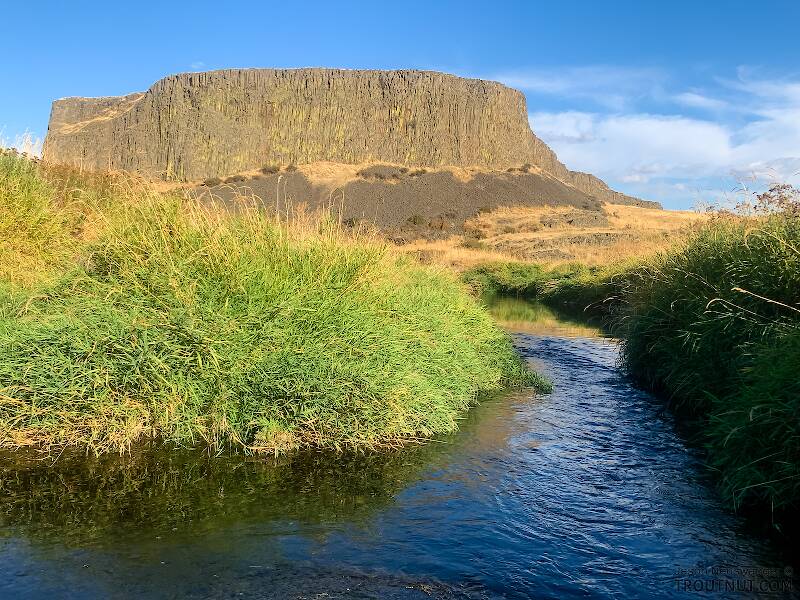
References
- Baumann, Richard W. 1975. Revision of the Stonefly Family Nemouridae (plecoptera) : a Study Of The World Fauna At The Generic Level. Smithsonian Contributions to Zoology undef(211): 1-74.
- Jacobus, L. M., Wiersema, N.A., and Webb, J.M. 2014. Identification of Far Northern and Western North American Mayfly Larvae (Insecta: Ephemeroptera), North of Mexico; Version 2. Joint Aquatic Science meeting, Portland, OR. Unpublished workshop manual. 1-176.
- Merritt R.W., Cummins, K.W., and Berg, M.B. 2019. An Introduction to the Aquatic Insects of North America (Fifth Edition). Kendall/Hunt Publishing Company.

